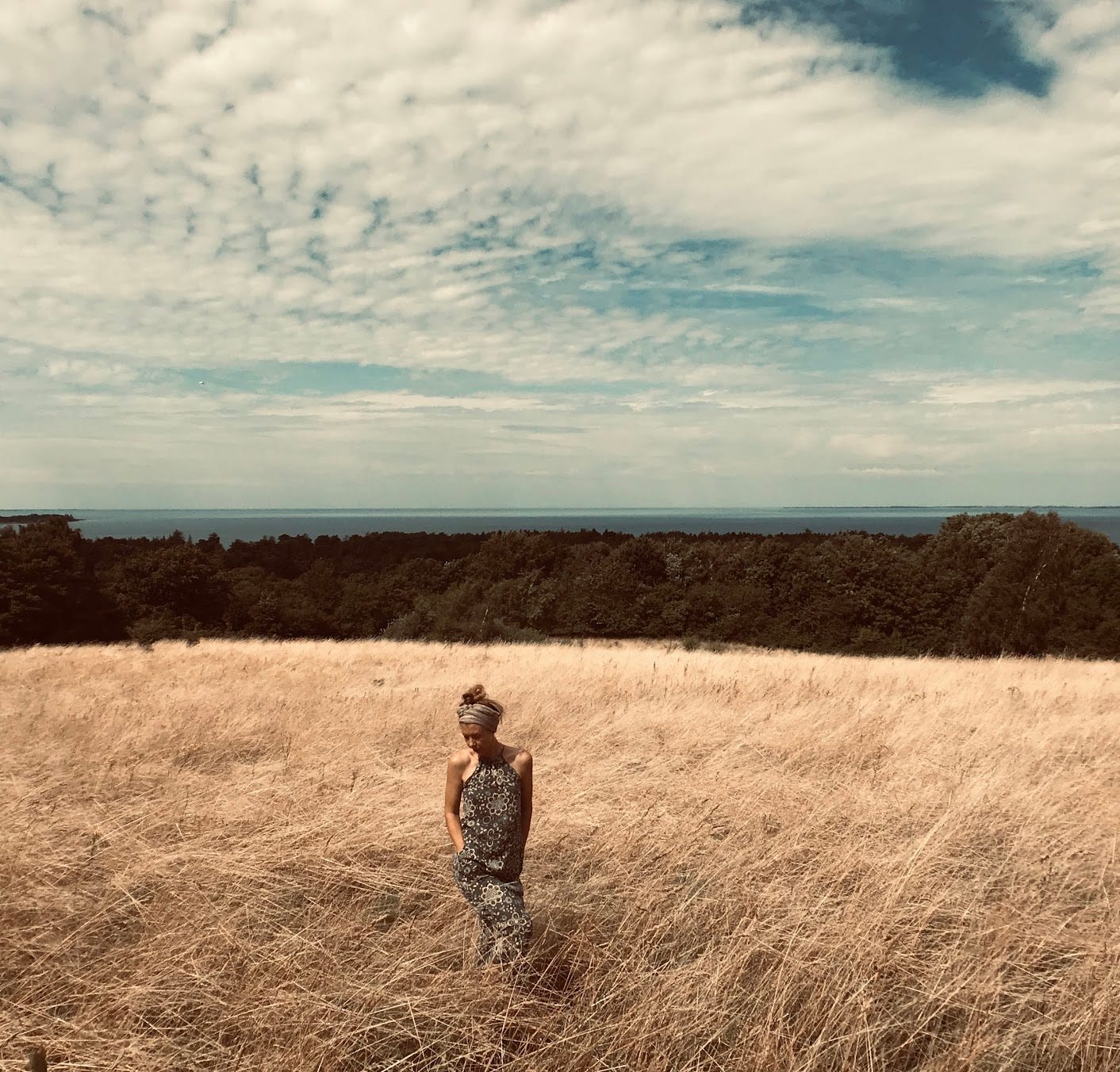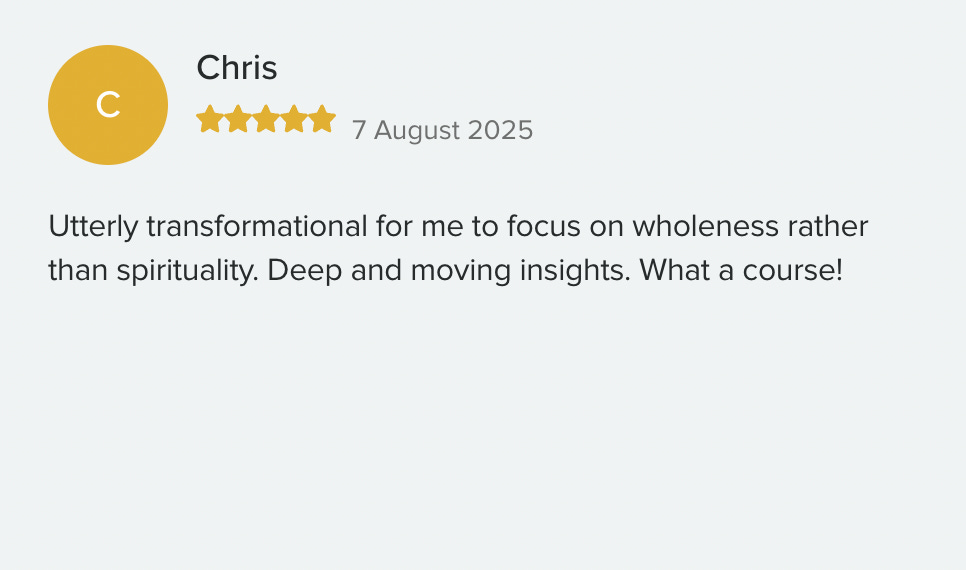Embodied Threads
Freedom inside the unavoidable body + trappings of the spiritual self

Beloved,
Evening is setting the scene for its grand finale. The meadow has been honeyed by the last lick of light. Dragonflies flit among the wildflowers whose scent lingers warm and comforting, despite their closing faces.
It’s quiet enough to hear the pygmy crickets stitched into the hems of the river bank, and the She-oak’s million thin needles hum in baritone. The last of the birds, like children, refuse to go home.
It would be easy to bask in all of this as a mere spectator, awkwardly seated at the edge of this divine orchestra.
Yet all of this speaks so vitally to what we are—if we truly knew it, we might be changed forever.
As I have done for most of my spiritual life, I have sought to better who I am. I have rearranged my thoughts to be more empowered, kinder, and less limiting. I’ve targeted “the ego” as the main suspect of my discontent. I practiced stillness with relentless effort, meditated harder and longer, believing enlightenment to be the only way out of the kind of suffering I gravitated toward.
Yet, after all this, I found myself managing a spiritual self, one more identity to fix, maintain, and cultivate again and again…until something in me simply couldn’t take it anymore.
And so came the inevitable breakdown: existential, trauma-laden, soul-deep.
The beautiful thing about a crisis is that it challenges the one concept many spiritual traditions tend to avoid: our identity.
If we believe we’ve ascended our humanness, a body in crisis will reveal a deeper truth.
If we believe we’ve found unshakable ground, a body in crisis will pull rug after rug until only groundlessness remains.
If we believe we know who we are, a body in crisis will show us that this very knowing is what causes so much ache.
Crisis, spoken through the unavoidable body, finally showed me the way out—not by fixing myself, but by ending my neurotic relationship with myself, so I could finally let go and simply be.
In order to know who we are, we have to gather many concepts and conventions, assemble them into a pixelated image of “me,” and then invest our belief in it. But to know what we are, there is no map, no solid answer, only a bewildering openness to perceiving life in all its dimensions from the depths of our quiet being.
To know who we are is to stand apart from beauty and wonder how to belong to it. But what we are knows that we are the very reason any of this is known at all, and that opens the door to an ever-deepening wonder.
True healing attempts to raise the ground of what we are so that we are not so fixated with the who.
When unwanted circumstances arise, the who is thrown into turmoil, asking, Who am I to be given so much pain, such heartache, such discontent? The who lives bound to conditions, is validated by thought, and is always split in two: a self made lesser, and a self imagined higher, struggling to save the other.
But the what asks instead: What am I, to feel such emotion, such confusion, such longing? And with the wordless silence that follows, the karmic patterns fall loose at our feet, allowing any response to come from our being instead.
The deepest path is not one that rearranges ideas about who we are, but one that brings us into direct, somatic contact with what we are.
In every moment, we can live as a who, a conditional, personal me, or we can surrender more deeply into what is here, free of resistance, revealing the heart of all spiritual traditions.
Practice - You don’t need to go anywhere to be what you are. Right now, if you can, slow down and lean into your senses, into the stillness at the core of your body. Allow everything to be just as it is, without pushing against or away from this moment. Breathe deeply, noticing where resistance shows up as tension in the body. Let your thoughts pass without interest. As if untying puppet strings one by one, simply release the movement away from what is here, and fall deeper into yourself, into presence.
The point has never been to change, fix, or even get rid of ourselves, but to recognize we are more than the shifting mirrors of our identity. This knowing is effortless, requiring a simplicity the mind rarely trusts.
Only then can loss, change, and grief be met without separation, without the exhausting cycle of self-management, freeing the energy once spent on resisting life to be lived as life itself.
Wholeness begins the moment we ask, with love: What am I, to long for healing, to feel grief, to know beauty?
And if a definitive answer arises, know this: the path has only just begun.
This month’s curation for opening to Mystery:
A poetic experience—The Tree That Forgot Itself
A guided meditation—Self As Earth
The poetry book—Whole In The Body
Coming soon to Insight Timer this month, The Body As Infinity’s Dwelling Place—“The oldest house in the world is the body. Not just this human one, but every form that has ever carried the wild, unbroken current of being. We belong to a lineage of dwellings, billions of years old—shells and scales, fur and feather, the shimmering film of cell walls. We are not separate, not owners of our bodies, but borrowed stardust, borrowed breath, borrowed sensation—existence’s brief gesture of this moment, now…”
Read the recent poem that personifies Age, so we can end our struggle against it—from last week’s newsletter.
Part 3, Mirrors, is my favorite meditation from the guided 7-day course, W(hole)ness. Here’s the most recent course comment,
Questions for our members
What has your body taught you about living more fully, more authentically?
What truths has your body revealed that your mind alone could not?
To listen to all the audio newsletters, contribute to our community poems, and discover gentle, embodied nondual poetry + practices, consider supporting this space.






